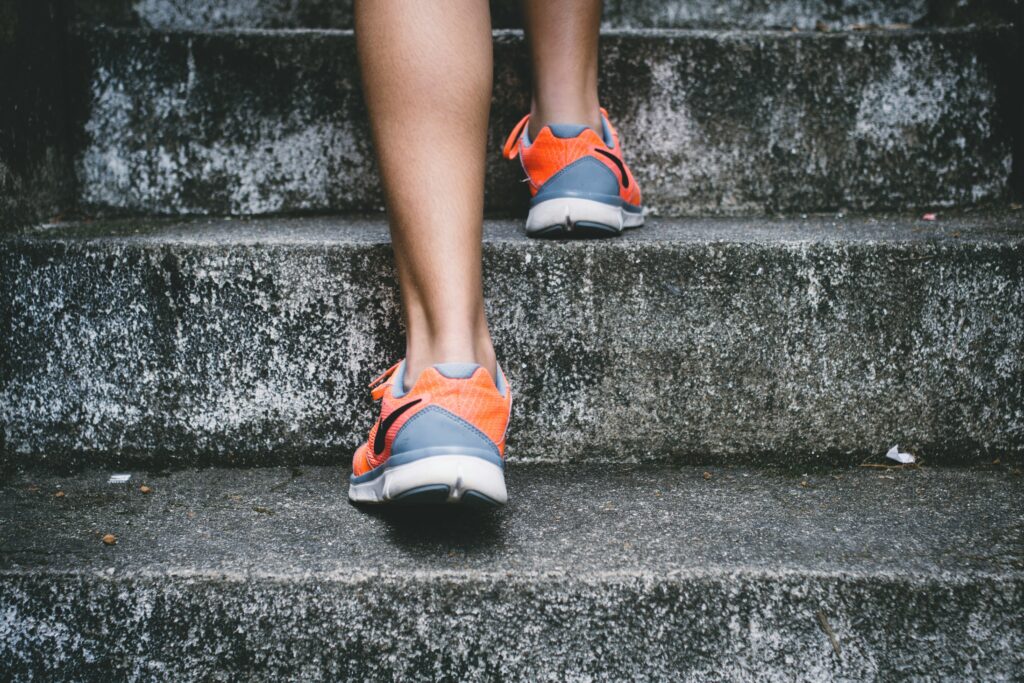
Running gear is one of the first big questions new runners face. It’s totally understandable—when we start something new, we want to be prepared and do it right. The good news? You don’t need to spend a fortune to get started. With a little guidance, you can find comfortable, reliable gear that fits your budget and running goals.
Here’s what I started with, what worked for me, and what I still use today.
Tops/Shirts
As a recreational soccer player, I naturally gravitated toward soccer jerseys—specifically Adidas. They’re breathable, designed for movement, and I didn’t experience any chafing. Big win.
I also picked up a handful of BCG shirts, which are available at Academy Sports + Outdoors (if you have one nearby). These shirts are lightweight, moisture-wicking, and affordable—great for beginners on a budget.
Pro tip: On really sunny days, I often wear long sleeve moisture-wicking shirts for added sun protection. Just make sure your shirts aren’t too tight or too loose, as both can cause chafing. Look for tops labeled as “moisture-wicking” or “quick dry.”
Shorts
I run in BCG 5” running shorts, also from Academy. They’re affordable, durable, and most importantly—comfortable. I’ve worn them for 5Ks, 10Ks, and even a half marathon with zero chafing.
Some styles even include a built-in compression liner for added support. If I had to nitpick, the moisture-wicking on these could be a bit better, but overall they’ve been a great pick.
Underwear
This one is totally up to personal preference, but the key word is comfort—especially if you plan on running longer distances. Choose underwear that doesn’t ride up or cause friction. Seamless, moisture-wicking options are ideal.
Socks
I’ve had great luck with Feetures Compression Running Socks. I use them mostly for long runs—the compression helps with circulation, and I’ve noticed fewer blisters and less foot fatigue.
They come in different compression levels, so your experience may vary. And yes, they’re a bit on the pricier side, but they’ve held up well for me. If you’re not ready to splurge, a good polyester-blend sock that fits well and protects your Achilles tendon will do the job just fine.
Note: I haven’t used long compression socks yet, but I’m planning to try them soon—stay tuned.
Shoes: The Big One
Ah yes, the million-dollar question: what shoes should I wear?
When I first started running, I thought, “I already have sneakers—I’ll just use those.” I tried a few:
- Nike Pegasus 40s: Great walking shoes, but when I ran in them, they felt stiff. I started developing shin splints, so I moved on.
- Adidas Ultraboost (2022): Super comfortable for short runs and sprints, but once I started logging 6+ miles, I experienced discomfort and occasional blisters.
At this point, I realized I was getting serious about running, so I visited a local running store called Fleet Feet. They scanned my feet and gave me a personalized shoe recommendation based on my foot shape and running style (distance, pace, terrain, etc.).
Turns out, I have wide feet. The staff explained that this likely caused my issues with the previous shoes. They recommended the Hoka Clifton 9—a cushioned, neutral shoe that accommodates wider feet. At first, I was hesitant because of the thick sole, but once I tried them on, it felt like I was floating. My posture improved, and I experienced less fatigue on long runs.
Moral of the story? Go to a specialty running store and get fitted. It’s worth it. Everyone’s feet and running mechanics are different, and getting the right shoe makes a huge difference.
Final Thoughts
When it comes to running gear, start simple. You don’t need to buy everything at once or spend a lot to be a runner. Focus on comfort, fit, and function. Over time, you’ll figure out what works best for your body and your runs.
In my next article, I’ll dive deeper into the importance of proper shoe fit—and how it can help prevent injuries and keep you running longer.
